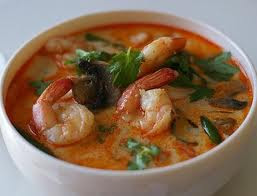 Here's how to make tandoori chicken, a British....I mean Indian favourite
Here's how to make tandoori chicken, a British....I mean Indian favouriteIngredients
1 cup natural yogurt
1 tablespoon ground cumin
1 tablespoon garam massala
1 teaspoon coriander powder
1 teaspoon tumeric powder
1 teaspoon chilli powder
Juice of 1 lemon
8 cloves garlic, crushed
1 inch of grated ginger
Few drops of red food colouring
4 pieces of skinless chicken on the bone
Melted butter for basting
Method
- Mix all of the spices together in a bowl and add the yogurt, lemon juice, garlic and ginger.
- Add the red food colouring until you get a bright red colouring.
- Score the chicken every 2cm and place in the marinade, massaging it into the chicken and sit for at least one hour.
- Grill until cooked and juices run clear, basting with the melted butter in the last 5 minutes of cooking.
- Serve with rice and roti.







